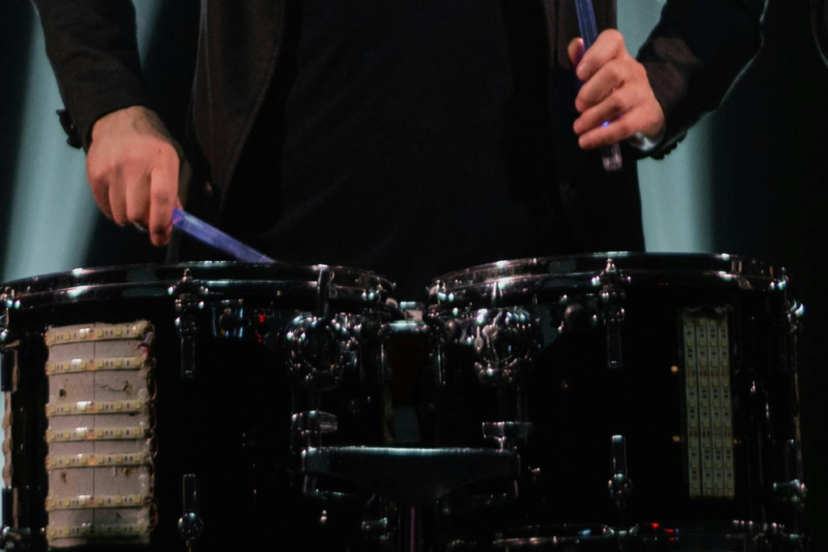In the world of music production, beats are the backbone of countless tracks across various genres,…
How to Play Quad Drums: Learn the Fundamentals

Are you eager to learn how to play quad drums? Mastering this exhilarating percussion instrument opens up a world of rhythmic possibilities and allows you to explore the fundamentals of quad drumming. From crossovers and playing zones to sweeps, scrapes, and rudiments, this art form demands precision, dexterity, and a deep understanding of techniques.
In this comprehensive guide, we’ll delve into the essentials of how to play quad drums, equipping you with the knowledge and skills to navigate the intricate patterns and movements with ease. We’ll cover everything from choosing the right equipment to executing basic techniques, developing rhythm and speed, and avoiding common mistakes along the way.
Choosing the Right Equipment
When it comes to choosing the right equipment for learning how to play quad drums, there are two crucial aspects to consider: the types of quad drums and the recommended drumsticks and mallets.
Types of Quad Drums
The most straightforward type of tenor layout is the 4-drum variety, which includes the fundamental four drums that make up the baseline of the tenor set. You can stick to these four drums to keep it simple or add your choice of ‘shot’ or ‘spock’ drums to take things to the next level. If you’d like to build your own set from scratch, you can opt for individual marching toms like the Pearl Competitor Series Individual Marching Toms, sold one at a time. This allows you to create an exotic set with unconventional size progression or replace a worn-out drum on an existing tenor rack.
Ready-made sets of marching quads are also available, ranging from affordable options like the Sound Percussion Labs Marching Tenor Drum with Carrier to high-end models like the Pearl Championship CarbonCore Marching Tenor Drums Quad Sonic Cut. The choice depends on your budget and the level of customization you require.
Recommended Drumsticks and Mallets
Selecting the right drumsticks and mallets is crucial for playing quad drums effectively. Vic Firth and Innovative Percussion offer a wide range of options designed specifically for multi-tom use. For example, the Vic Firth MTS1 Tenor Stick and the Innovative Percussion TS-PR Paul Rennick tenor produce a distinct sound suitable for quad drums. Mallets like the Vic Firth MT1A Corpsmaster Multi-Tenor Mallets and the Innovative Percussion FT1 Synthetic Core Tenor Mallets provide excellent balance and control for staccato sounds.
When choosing drumsticks and mallets, consider factors such as the material (hickory, nylon, or felt), tip shape, and shaft thickness, as these affect the sound, response, and durability. It’s also advisable to have a variety of sticks and mallets on hand to accommodate different playing styles and techniques.
Basic Techniques and Movements
Understanding the Playing Zones
Unlike other drums, quads don’t sound as good when you play in the center of their head. We find that as we get closer to the edge, our sound gets much brighter. If you try it out yourself, you’ll find that if you play the center of the head, you get this very dead muffled sound, and as you get closer and closer to the rim, you find that the sounds start to open up and there’s much more vibrance to the sound, there’s much more projection.
The other reason why we talk about zones is for efficiency’s sake. You know, if we just played wherever we want on the drums, it’d be kind of hard to move and we’d be doing a lot of excess motion using muscles we don’t really need. So it helps us simplify everything down to where you’re gonna hit, we can talk about motion with how much you’re moving your arms, but it’s much easier to talk about motion when you’re talking about where you’re hitting on the drum, you know, where point A is and where point B is and how to get there.
The rule of thumb is one-third of the radius. So if the radius is from the center of the head to the rim, we take a third of that distance roughly from the edge, and anywhere around the drum is roughly where the sweet zone is. It’s obviously a very subjective topic, so it might be taught differently or defined differently somewhere else. There’s no one way to do it – there are many ways you can look at it.
Optimal Movement Techniques
On drums 3 & 4, a little different than the rest, since one hand has to reach across to the other side, we adjust where the zones are. On drum four, your left hand will be on top and your right hand on the bottom. The right hand is on the bottom simply because it has to get all the way across, and it’s impractical to try to get your bead all the way up there, and the left hand is on top because that’s the most relaxed position.
The same rule applies – one-third of the radius, and the same goes for drum three side. We’re good, left hand on bottom, right hand on top, one-third from the edge. And then we have the same rule where if we move one hand, the bead still stays in that spot.
It’s debatable exactly where and how you do it. Zones are very situational. Depending on what you’re playing, how you’re playing it, when you’re playing it, and all that, you’re gonna have to adjust your zones a little bit. Especially for crossovers, you’re gonna have to be changing your zones.
Developing Rhythm and Speed
Practicing with a Metronome
While some drummers may suggest practicing with a metronome set at a high speed like 200 beats per minute (BPM) to develop rhythm, this approach is not recommended. Instead, it’s better to start slower and gradually increase the tempo. Listening to actual music and great drummers in the style you want to play is more effective for cultivating a sense of feel and rhythm than solely relying on a metronome.
A metronome can be a useful tool, but it should not be the sole focus. Drummers need to develop various skills beyond keeping time, such as splitting bars into smaller parts, playing independent rhythms with each limb, and listening to phrasing and other players. Start by practicing basic patterns with your hands and feet separately, using a metronome occasionally, and then gradually incorporate more complex rhythms and coordination exercises.
Building Up Speed Gradually
To build up speed gradually, start by mastering exercises and rudiments on a single drum before moving them around the quad drums. Maintain the same feel and relaxed technique as you transition between drums. Stay loose from the shoulders down, and avoid tensing up, no matter how fast or challenging the pattern becomes. Relaxation and a free-flowing motion are essential for playing quads effectively.
Increase the tempo incrementally, focusing on maintaining proper technique and avoiding rushing or sacrificing accuracy. Regularly practice at slower tempos to reinforce your foundation and ensure you’re not developing bad habits. Consistency and patience are key when building speed and endurance on the quad drums.
Common Mistakes and How to Avoid Them
Posture and Hand Positioning
Proper posture and hand positioning are crucial for avoiding common mistakes while playing quad drums. Maintain a straight, poised, and confident stance with your feet correctly positioned. Keep your head up and eyes focused straight ahead at all times, projecting a facial expression of confidence and aggression. When marking time, ensure your feet are parallel and together, with heels touching and the balls of each foot touching. Strike the ground with a 2-inch heel lift to articulate the pulse accurately across the band.
Your hands should be relaxed, with no tension. Treat every finger as if it contributes 20% to your hand’s potential, as removing even one finger drastically decreases your ability, sound, and technique. Keep your fingers on the sticks at all times, with the sticks acting as a natural extension of your forearms. Hold the sticks at a comfortable elevation above the drum surface, allowing them to travel in a straight up-and-down motion.
Avoiding Overplaying and Maintaining Control
One common mistake is overplaying or adding unnecessary notes that ruin the groove of a song. Sometimes, even a single misplaced bass drum note can disrupt the song’s rhythm. It’s essential to record yourself and listen back to identify instances where you might be unintentionally ruining the groove. Songs like “Lonely is the Night” by Billy Squier demonstrate how adding extra notes, even if they fit the music, can disrupt the groove established by the original drum track.
The principle of “less is more” or “keep it simple” often applies. Playing too many notes where they aren’t needed can detract from the music. While it might seem boring, sometimes the simplest approach is the most effective for serving the song’s overall groove and feel. Maintaining control and resisting the urge to overplay is a crucial skill for quad drummers to develop.

FAQs About How to Play Quad Drums
1. How can I start learning how to play quad drums?
To begin learning quad drums, also known as marching tenor drums, it’s important to focus on lateral movements (moving from left to right) rather than moving forwards or backwards. Familiarize yourself with recognizing patterns in the music, such as which drum to hit in sequences (e.g., drum 2 then 4, or drum 1 then 3). Ensure your palms face downwards with the back of your hands facing upwards. When striking the drums, aim to hit the drumhead approximately 2-3 inches from the rim using the beads of your sticks or mallets.
2. What is the note configuration for quad drums?
In quad drums, the notation is specific where each drum corresponds to a different position similar to notes on a treble clef. The spock drum is notated above the staff, similar to a high G on a treble clef. Drum 1 is notated at the top space of the staff, akin to a high E. Drum 2 is noted where a high C would be, drum 3 aligns with where an A note would be placed, and drum 4 corresponds to where an F note would be.
3. How are quad drum notes read?
Reading quad drum notes involves understanding their specific placement on a musical staff, as detailed in the note configuration for each drum. Recognizing these placements helps in accurately playing the correct drum at the right time.
4. How can you play quads on a standard drum set?
Playing quads on a standard drum set involves adapting the quad drum techniques and note sequences to the tom-toms and other drums available on the kit. This may require some setup adjustments and practice to mimic the layout and sound of traditional quad drums.
Summary of How to Play Quad Drums
Mastering the art of quad drumming demands dedication, proper technique, and an understanding of the fundamental principles. By selecting the appropriate equipment, grasping the playing zones and optimal movements, and gradually developing rhythm and speed, you’ll be well-equipped to navigate the intricacies of this exhilarating percussion instrument. Remember to maintain proper posture, hand positioning, and control, avoiding common pitfalls that could hinder your progress.
Quad drumming offers a world of rhythmic possibilities, allowing you to explore intricate patterns and push your limits. Embrace the journey, stay committed to consistent practice, and let your passion for rhythm guide you. With time and perseverance, you’ll unlock the true essence of quad drumming, unleashing a dynamic and captivating performance that leaves a lasting impression on every audience.



